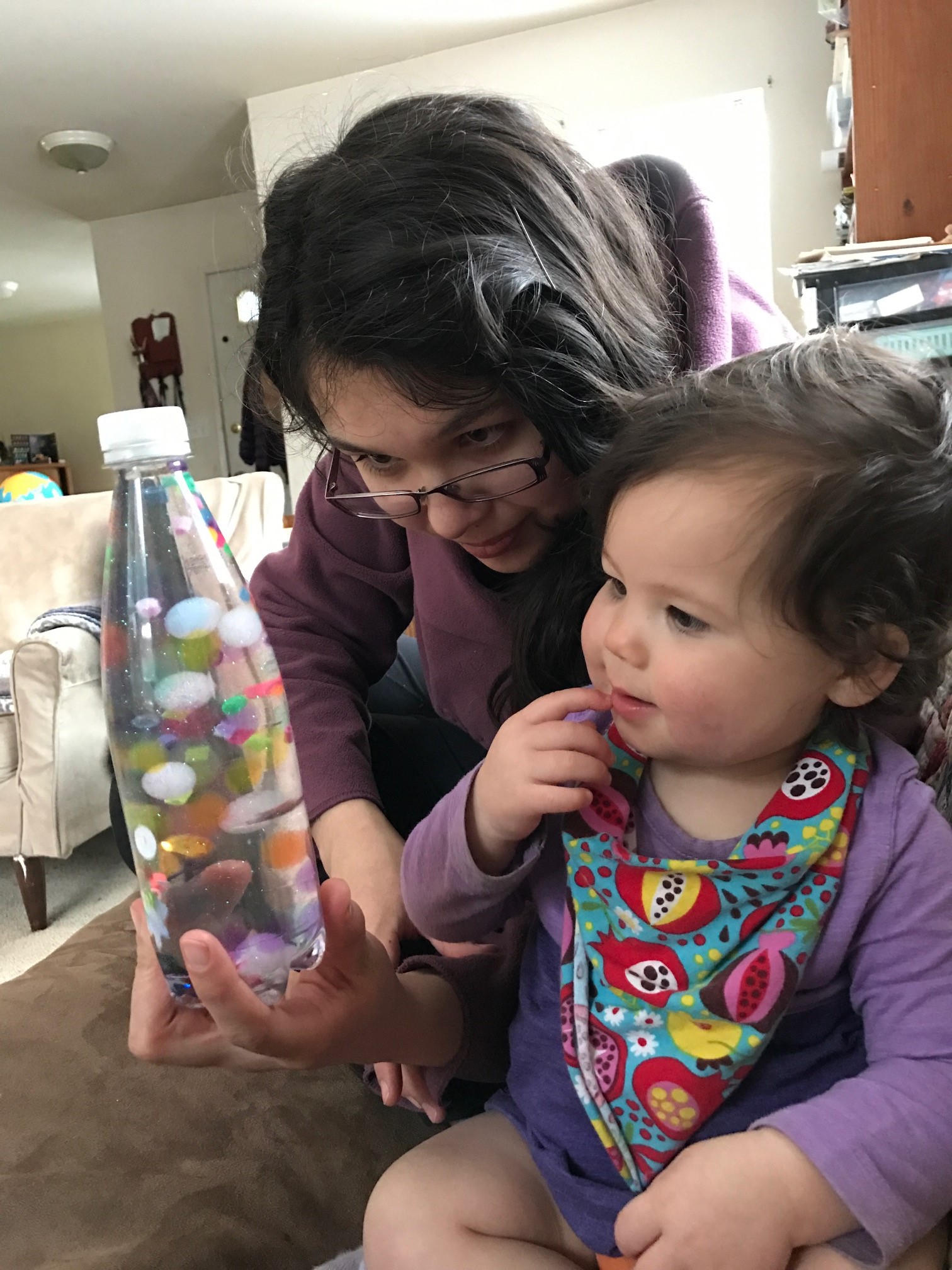
Goal 25: Children show curiosity and interest in learning
MOBILE BABIES MAY
- Engage familiar adults and children in interactions (smiling, approaching, not withdrawing).
- Express desire to feed self.
- Select a book, toy, or item from several options.
- Point to desired people, places, objects and take action.
- Show likes and dislikes for activities, experiences, and interactions.
- Actively resist items or actions that are unwanted.
YOU CAN
- Play with child individually every day.
- Follow child’s lead and/or choices in daily activities.
- Provide opportunities for child to choose toys to play with and books to read.
- Provide opportunities for child to take reasonable and safe risks (stretch for an object beyond reach).
Goal 26: Children persist when facing challenges
MOBILE BABIES MAY
- Remember where favorite items are stored.
- Attempt in self-help activities.
- Try different ways of doing things.
- Focus on caregiver, material or toy (such as a book) for short periods of time.
YOU CAN
- Provide games to promote predictable memories (memory games, add patterns and more complexity to the games).
- Communicate about tasks and experiences with simple words and conversations, include role playing.
- Point out interesting objects and events to focus attention.
- Promote routines.
- Provide child with opportunities to explore different characteristics of an object (the toy has several parts; a face has eyes, ears, nose, and mouth).
- Observe child to learn which activities increase or sustain his/her interest.
Goal 27: Children demonstrate initiative
MOBILE BABIES MAY
- Express desire to feed self.
- Select a book, toy, or item from several options.
- Show likes and dislikes for activities, experiences, and interactions.
YOU CAN
- Provide opportunities for child to choose toys to play with and books to read.
- Provide opportunities for child to take reasonable and safe risks (e.g., to stretch for an object beyond reach).
- Provide many opportunities for active exploration.
Goal 28: Children approach daily activities with creativity and Imagination
MOBILE BABIES MAY
- Imitate action observed in another situation (try to stack blocks after watching another child stack blocks, bang on surface after watching drumming at a cultural event).
- Use items differently and creatively (a bucket is turned upside down to build a tower base or to be a drum).
- Play with dolls, stuffed animals, puppets.
- Pretend one object is really another (use a wood block as a telephone).
YOU CAN
- Play with child individually every day.
- Change the materials, toys, and objects in child’s environment regularly (rotate toys weekly).
- Provide child time and opportunities to be spontaneous, silly, and messy.
- Play with child in creative ways (use soft toys to create a puppet show, tell imaginative stories using familiar characters and the local environment).
- Follow child’s lead during play.
- Engage in songs and finger plays with child.
- Read picture books and tell stories.
Goal 29: Childen learn through play and exploration
MOBILE BABIES MAY
- Behave in consistent ways to elicit desired response (kick a mobile).
- Play games with primary caregiver that involve repetition (peek-a-boo).
- Experiment to see if similar objects will cause similar responses (shake stuffed animal in the same way as a rattle to hear noise).
- Display recognition and excitement about game or toys from previous day.
- Apply knowledge to new situations (bang on bucket instead of drum).
YOU CAN
- Play with child individually every day.
- Interact with child in consistent and predictable ways.
- Provide child with toys and objects that react to specific actions (sound-making toys).
- Provide opportunities for child to try same action on a different object (shake a rattle, shake a stuffed animal, shake a ball).
- Comment when child applies knowledge to new situations, using descriptive language.
- Provide sensory materials for exploration.